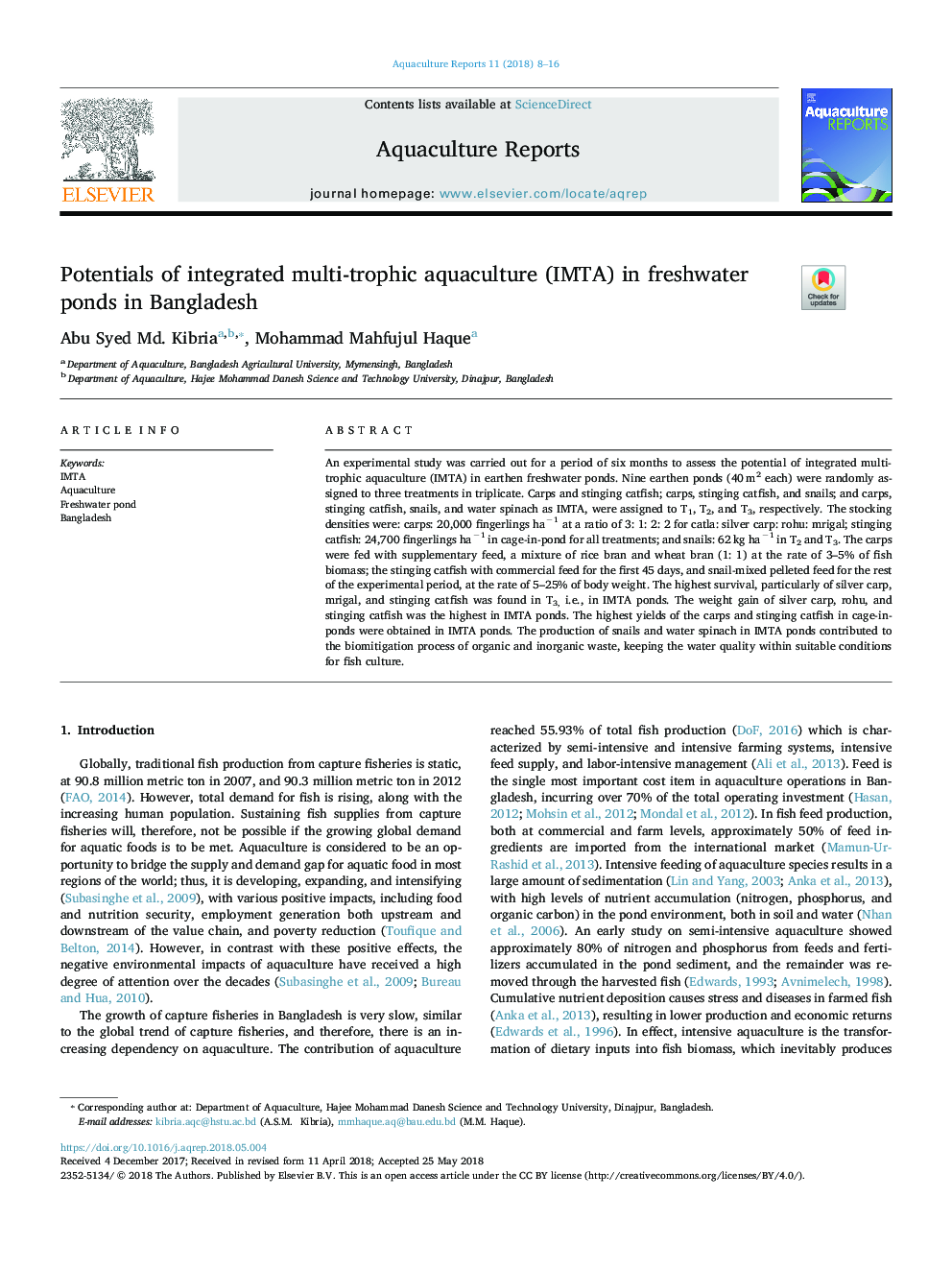| کد مقاله | کد نشریه | سال انتشار | مقاله انگلیسی | نسخه تمام متن |
|---|---|---|---|---|
| 8863310 | 1620269 | 2018 | 9 صفحه PDF | دانلود رایگان |
عنوان انگلیسی مقاله ISI
Potentials of integrated multi-trophic aquaculture (IMTA) in freshwater ponds in Bangladesh
دانلود مقاله + سفارش ترجمه
دانلود مقاله ISI انگلیسی
رایگان برای ایرانیان
کلمات کلیدی
موضوعات مرتبط
علوم زیستی و بیوفناوری
علوم کشاورزی و بیولوژیک
علوم دامی و جانورشناسی
پیش نمایش صفحه اول مقاله

چکیده انگلیسی
An experimental study was carried out for a period of six months to assess the potential of integrated multi-trophic aquaculture (IMTA) in earthen freshwater ponds. Nine earthen ponds (40â¯m2 each) were randomly assigned to three treatments in triplicate. Carps and stinging catfish; carps, stinging catfish, and snails; and carps, stinging catfish, snails, and water spinach as IMTA, were assigned to T1, T2, and T3, respectively. The stocking densities were: carps: 20,000 fingerlings haâ1 at a ratio of 3: 1: 2: 2 for catla: silver carp: rohu: mrigal; stinging catfish: 24,700 fingerlings haâ1 in cage-in-pond for all treatments; and snails: 62â¯kg haâ1 in T2 and T3. The carps were fed with supplementary feed, a mixture of rice bran and wheat bran (1: 1) at the rate of 3-5% of fish biomass; the stinging catfish with commercial feed for the first 45 days, and snail-mixed pelleted feed for the rest of the experimental period, at the rate of 5-25% of body weight. The highest survival, particularly of silver carp, mrigal, and stinging catfish was found in T3, i.e., in IMTA ponds. The weight gain of silver carp, rohu, and stinging catfish was the highest in IMTA ponds. The highest yields of the carps and stinging catfish in cage-in-ponds were obtained in IMTA ponds. The production of snails and water spinach in IMTA ponds contributed to the biomitigation process of organic and inorganic waste, keeping the water quality within suitable conditions for fish culture.
ناشر
Database: Elsevier - ScienceDirect (ساینس دایرکت)
Journal: Aquaculture Reports - Volume 11, August 2018, Pages 8-16
Journal: Aquaculture Reports - Volume 11, August 2018, Pages 8-16
نویسندگان
Abu Syed Md. Kibria, Mohammad Mahfujul Haque,